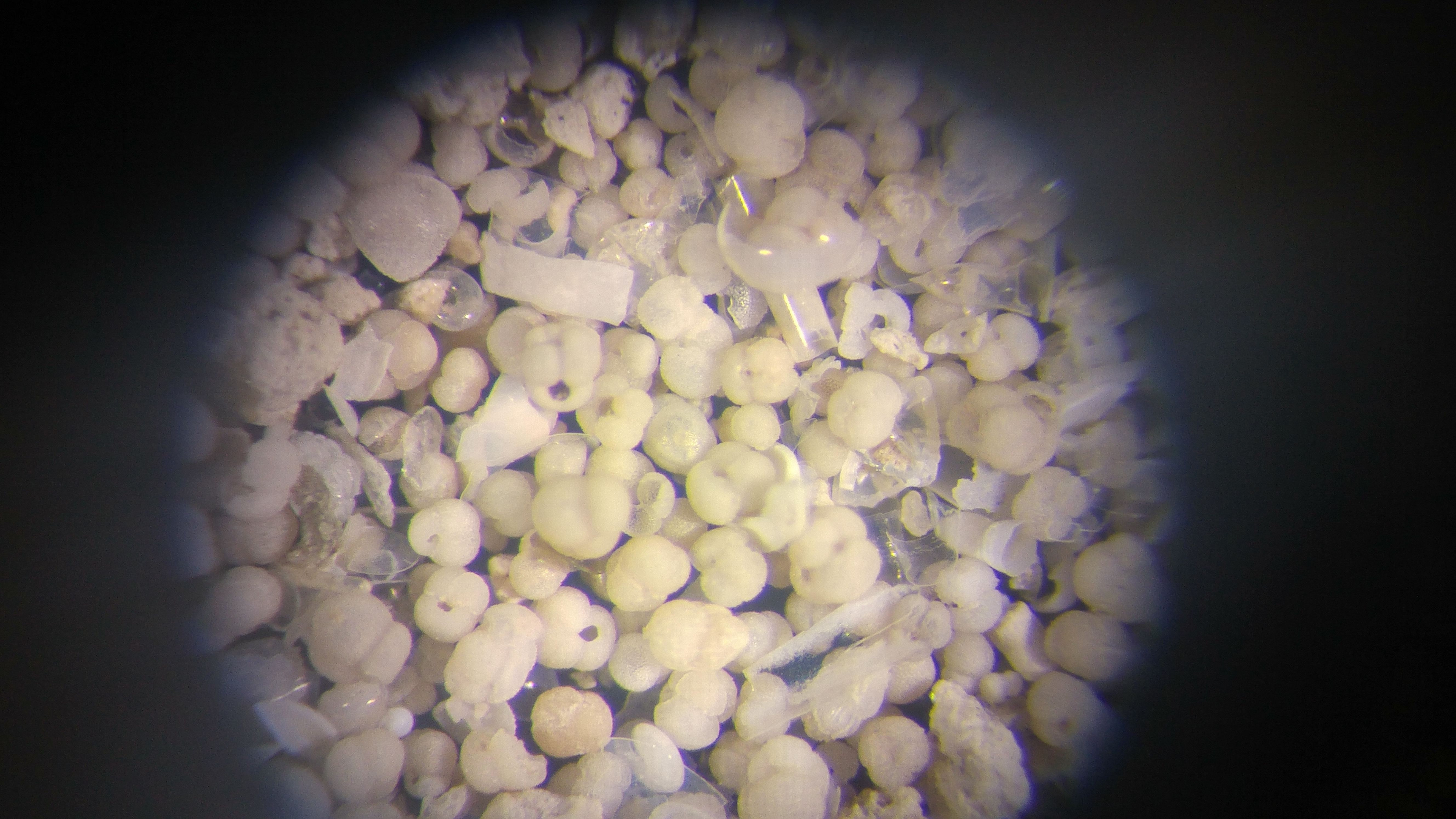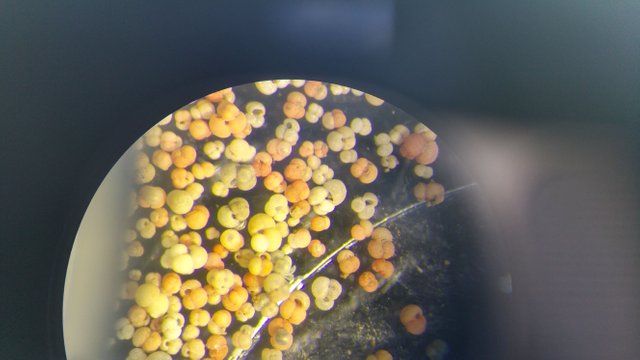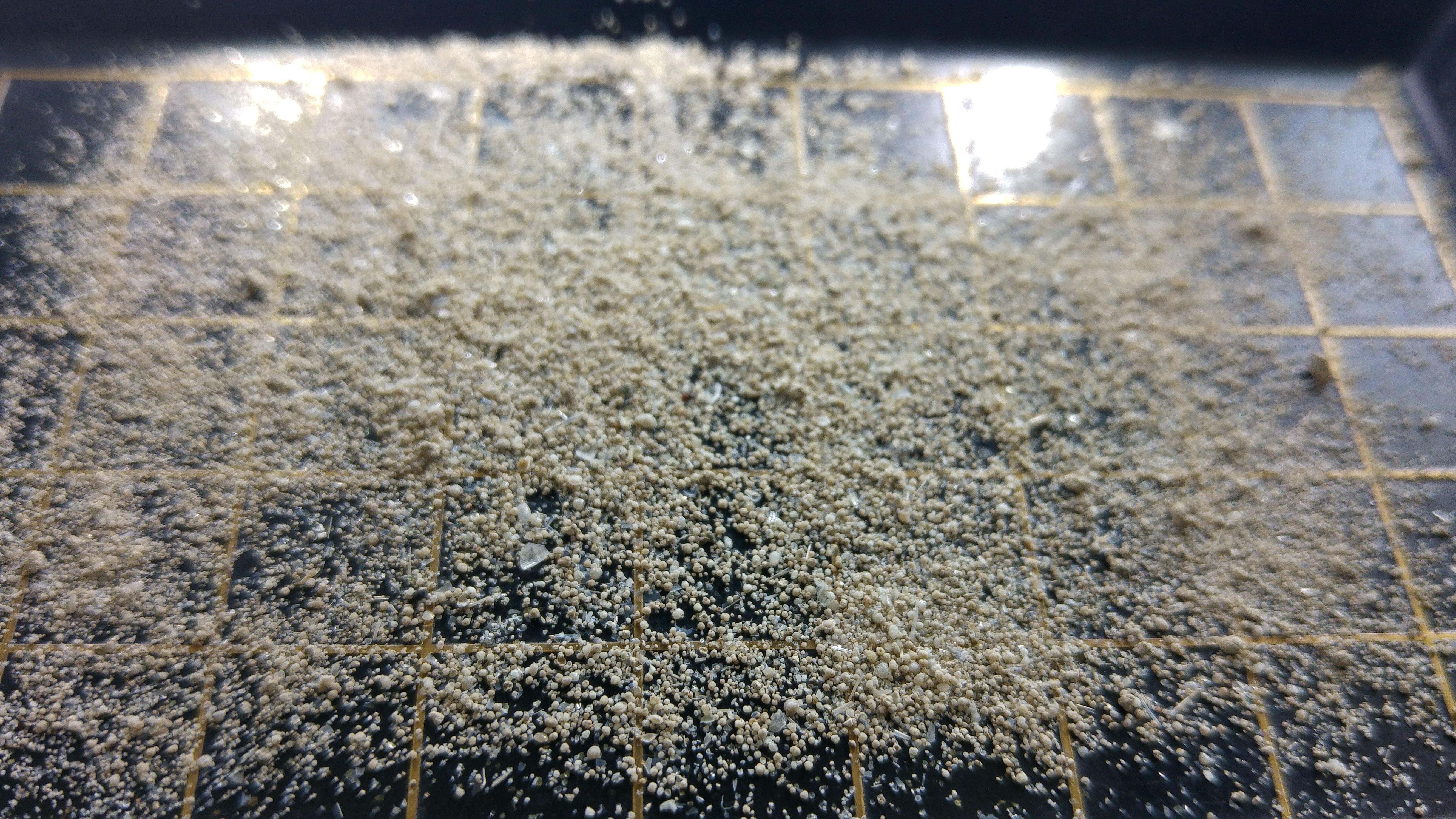Il piccolo magico mondo dei foraminiferi / The little magic world of foraminifers ( Italian - English)

Ciao a tutti! Bentornati nel mio profilo Steemit. Come al solito voglio iniziare con una premessa. Il post di oggi è una sorta di esperimento. Poiché lavoro nel campo della geologia marina ho pensato di mettere uno degli argomenti che preferisco per poi spiegarlo tramite dei semplici domanda/risposta e con alcune mie foto. Alcuni termini che spesso sono complicati cercherò di spiegarli nel testo. Ok, ora possiamo passare all'argomento di oggi: i foraminiferi.
Cosa sono i foraminiferi?
I foraminiferi sono organismi protozoi eucarioti eterotrofi marini che si suddividono in forme plantoniche e bentoniche, ossia che si fanno trasportare dalle correnti o rimangono fisse o semifisse sul sedimento marino. Non sono solo di acqua salata, ma in casi di poche forme anche salmastre e acqua dolce. Hanno spesso un guscio di carbonato di calcio, ma raramente esistono forme agglutinanti che costruiscono il guscio con quello che trovano.

Hello to everyone! Welcome back to my Steemit profile.
As usual, I want to start with a premise. Today's post is a kind of experiment. Since I work in marine geology field I thought about putting one of my favorite subjects and then explaining it through simple question / answer with some of my photos. For some complicated terms I will try to explain them in the text.
Ok, now we can move on to today's topic: the foraminifers.
What are foraminifers?
Foraminifers are marine heterotrophic eukaryotic protozoan organisms who suddivides in planktonic and bentonic forms that is, that they are transported from currents or remaining fixed or semifixed on marine sediment. They are'nt only salt water species, but also rarely brackish and fresh water forms. They often have a calcium carbonate shell, but rarely there are agglutinating forms that build the shell with what they find.

They seems pop corns but they are'nt pop corns. / Sembrano pop corn ma non sono pop corn.
Perché sono importanti? Hanno qualche utilità?
I foraminiferi sono molto utilizzati sia in biologia che in geologia. Tralasciando la biologia poiché non me ne occupo, in geologia, o meglio nella paleoclimatologia, sono ottimi strumenti per le datazioni temporali e la comprensione del clima nel passato. Non so se avete mai sentito parlare del metodo del radiocarbonio o degli isotopi dell'ossigeno, ma questi due sono esempi di come i foraminiferi vengono utilizzati. Per non farla complicata si può dire che il metodo del radiocarbonio è quello del famoso 14C (carbonio radioattivo con 14 neutroni anziché 12) che deriva dall'azoto nell'aria.
Si data quanto ce né rispetto al 12C (carbonio non radioattivo). Invece, per gli isotopi dell'ossigeno si considerano i due atomi di ossigeno che variano in numero di neutroni (16O e 18O). In questo caso è possibile fare distinzioni climatiche nei climi del passato come ad esempio capire se eravamo in un periodo glaciale o interglaciale. Nei prossimi articoli approfondirò queste tematiche.
Why are they important? Do they have any use?
Foraminifera are widely used in both biology and geology. Leaving aside biology because I don't deal with it, in geology, or better in paleoclimatology, they are excellent tools for temporal dating and understanding climate in the past. I don't know if you've ever heard of the radiocarbon method or oxygen isotopes, but these two are examples of how foraminiferals are used. Because I don't want to make it complicated, it can be said that the radiocarbon method is that of the famous 14C (radioactive carbon with 14 neutrons instead of 12) which derives from nitrogen in the air.
Then is compared to 12C quantity with a specific formula (12C isn't a radioactive carbon). Instead, for the oxygen isotopes we consider the two oxygen atoms 16O and 18O. Their atoms vary in number of neutrons. In this case it's possible to make climatic distinctions in the climates of the past such as understanding if we were in a glacial or interglacial period. In the next articles I will go into these issues.

Some foraminifers aren't red because they eat chilli/ Alcuni foraminiferi non sono rossi perché hanno mangiato chili
Perché alcuni foraminiferi sono rossi o neri? E perché alcuni sono piccoli e altri grandi?
Ovviamente alcuni foraminiferi non sono rossi perché hanno mangiato chili piccante. Dovete sapere che soltanto trovando esemplari rossi abbiamo indicazione di un clima caldo. Supponete di trovare un foraminifero del passato di 10000 anni fa di colorazione rossa. Avete già un'indicazione sulla probabilità di un clima temperato-caldo in quel posto a quei tempi. Questa colorazione dipende probabilmente da processi di ossidazione, ma nei climi caldi si hanno altre particolarità: i gusci sono molto più grandi rispetto ai climi più freddi. Provate a cercare in rete un esemplare di clima caldo G.sacculifer e uno di clima freddo N.pachyderma. Noterete subito la differenza. Infine, come mai ci sono anche alcuni esemplari neri? Gli esemplari neri sono dovuto alla presenza di materia organica oppure da riempimenti nei gusci. Se sono ricchi di materia organica, chissà, magari sei vicino al petrolio ;)
Why are some shells red or black? And why some big and other little ones?
Obviously some foraminifers are not red because they have eaten spicy chilli. You must know that only by finding red specimens we are indicating a warm climate. If you suppose to find a 10000 year old red foraminifer, you already have an indication of a warm-temperate climate in that place at that time. This coloring probably depends on oxidation processes, but in warm climates there are other peculiarities: the shells are much larger than in the colder climates. Try searching in the web for a warm climate species G.sacculifer and a cold climate species N.pachyderma. You will immediately notice the difference. Finally, why are there even some black specimens? The black specimens are due to the presence of organic matter or from black fills in the shells. If they are rich in organic matter, who knows, maybe you're near to oil ;).

Le foto sono di mia proprietà e non provengono da siti esterni
All photos on this page are my property and don't come from external sites
Vienici a trovare su steem post italia https://discordapp.com/invite/QDKPzSp
Arrivo subito!
Gli articoli scientifici sono sempre i benvenuti. Se ti va aggiungi il tag "scienze" :)
Hai ragione :) fatto e grazie!
Interessante, ti seguo!
Mi fa piacere :) ricambio